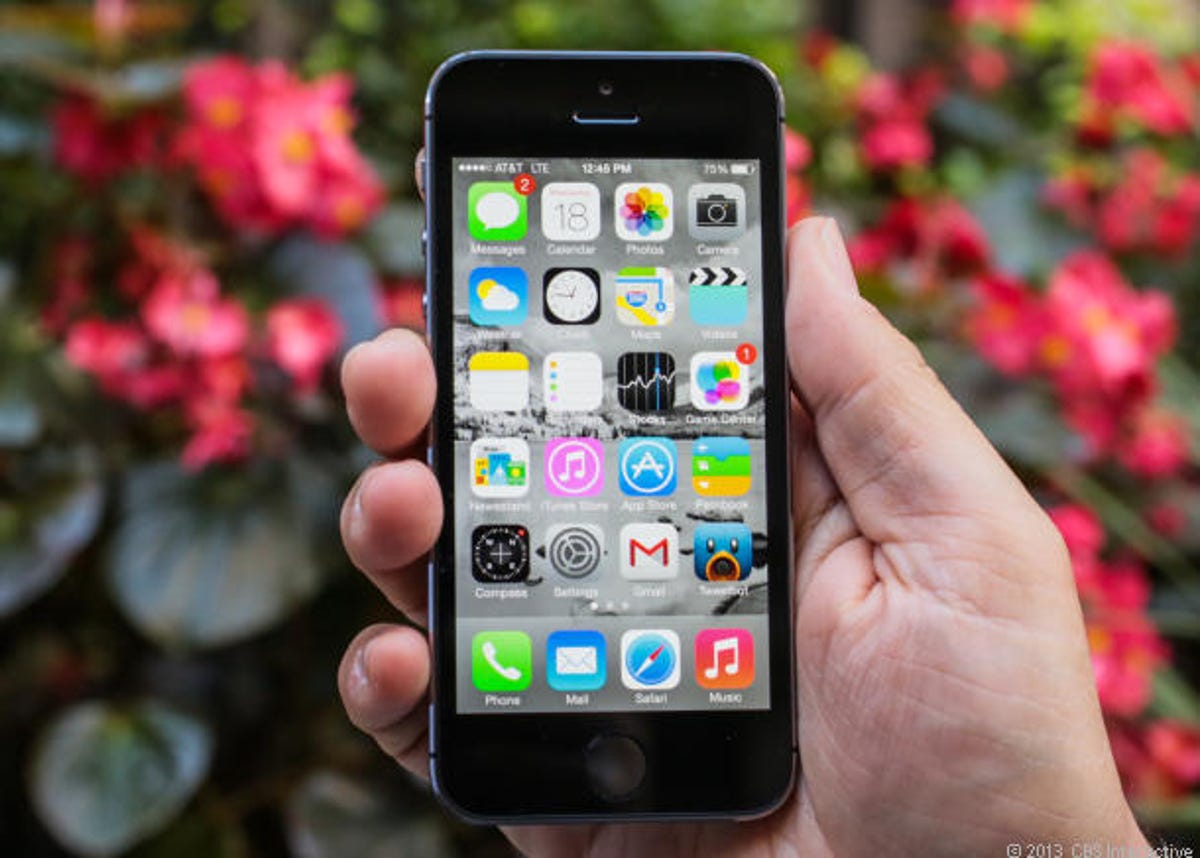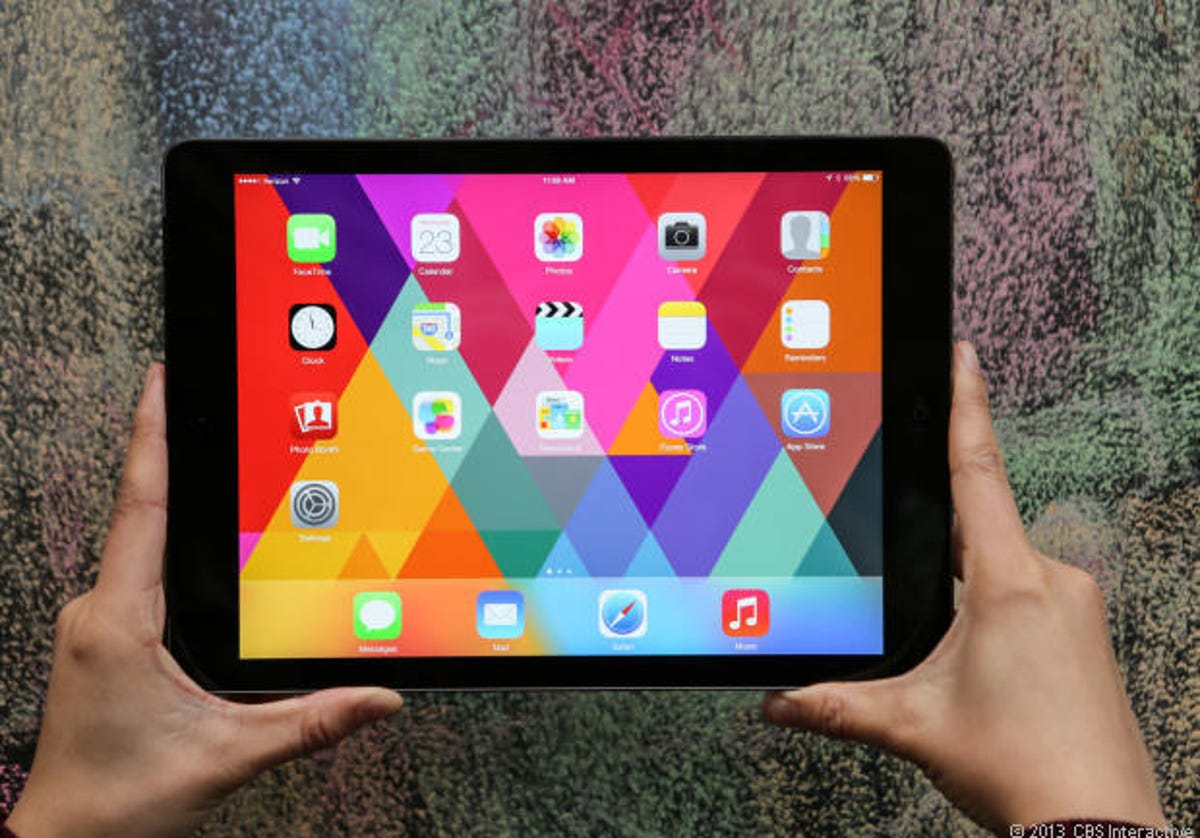
CNET
Apple posted good, but not great results in the quarter ahead of its anticipated iPhone launch.
The Cupertino, Calif., electronics giant on Tuesday reported earnings in the fiscal third quarter that topped Wall Street expectations, but iPhone sales, revenue results, and fourth-quarter guidance weren’t quite the blowout analysts had hoped for. It also reported disappointing iPad sales for the second period in a row.
Apple CEO Tim Cook didn’t mention the iPad during his comment in the company’s press release but said “revenue was fueled by strong sales of iPhone and Mac and the continued growth of revenue from the Apple ecosystem, driving our highest EPS growth rate in seven quarters.”
For the current quarter, which ends in September, Apple expects revenue of $37 billion to $40 billion, slightly less than the $40.44 billion projected by analysts. It also anticipated a gross margin of 37 percent to 38 percent.
Analysts often look at fiscal fourth-quarter guidance as a sign for what sort of iPhone launch Apple anticipates, and it appears the company is staying conservative. The iPhone, which contributes to more than half of Apple’s total revenue, serves as the lynchpin to its overall growth, particularly as the market awaits the widely speculated iWatch and as the iPad struggles against lower-cost rivals and larger phones.
Apple iOS 8 at WWDC 2014 (pictures)






The fiscal third quarter is an “off period” in between product announcements. Many market watchers expect Apple in September to introduce two new iPhone 6 models with display sizes of 4.7 and 5.5 inches, though some recent reports speculate one device could be released at a later date. Apple has asked manufacturing partners to produce 70 million to 80 million units of its larger screen iPhones by Dec. 30, The Wall Street Journal reported Monday. That’s up from its initial order of 50 million to 60 million units of the iPhone 5S and 5C, the paper said.
“Tonight’s conference call is of much less significance than past quarterly reports, as we believe investors are more focused on the ‘Fab Fall‘ launch,” said Cantor Fitzgerald analyst Brian White.
Apple sold 35.2 million iPhones during the fiscal third quarter, helping the device remain its biggest moneymaker. Analysts, on average, had expected Apple to sell 35.9 million iPhones in the period, according to a calculation by Fortune. Apple sold 31.2 million iPhones in the year-ago period.
It also sold 13.3 million iPads in the most recent quarter, down 9 percent from a year ago. Analysts expected the company to sell about 14.4 million iPads, Fortune said.
Apple in June split its stock 7-for-1 to make its shares more accessible to a larger number of investors. The move caused the company to adjust its previous financial results for comparison. Before the split, shares were trading around $650, and the stock, when adjusted for the split, has jumped about 25 percent since Apple announced the move during its last earnings report in April. Shares closed Tuesday at $94.72 and slipped half a percent to $94.24 in after-hours trading.
See also
- WWDC set the stage. Now Apple needs to deliver
- With no ‘amazing’ devices due at WWDC, Apple’s Tim Cook feels the heat
- Apple WWDC 2014: Heavy on apps, services, and tweaks
- Apple’s iPad sales are not so magical after all
- Apple CEO defends iPad sales, but admits softer demand
Apple’s results have been fueled by the iPhone for the past several years, but the company is facing more competition than ever before. Samsung and others are pressuring the company at the high end, while Apple is largely missing out on the low end of the market. That’s a big concern as more and more mobile sales come from emerging markets like China, where inexpensive phones from companies such as Huawei and ZTE are popular.
So far, though, Apple’s customers have remained loyal, and it’s attracting buyers despite offering devices that are nearly a year old. In April, Apple said it had nearly 800 million iTunes accounts, a number that Cook described at that time as “staggering.” About a year earlier, Apple announced it had 575 million accounts.
By comparison, Samsung earlier this month said its second-quarter operating profit likely fell about 24 percent from the previous year to 7.2 trillion won ($7.12 billion). It also said sales likely totaled 52 trillion won, a 9.4 percent decline. Both figures fell short of analysts’ projections for the June period. The results would be Samsung’s worst in about two years and the third straight quarterly profit decline. Samsung didn’t disclose how many devices it sold, but it blamed its weak results on a slowdown in overall smartphone market growth and a strong Korean won.
Even though Apple’s iPhone sales have been holding up, the pressure is on for Apple to release new devices that prove it still has that magic touch. Cook has promised several times over the past year that Apple would enter
in 2014. And Eddy Cue, head of iTunes and the man behind Apple’s $3 billion acquisition of headphone and streaming service Beats, in May upped the ante by boasting that the consumer electronics giant is working on its ” best product pipeline in 25 years.” Until those items hit the market, Apple will need to keep pushing its current devices.
Michael Obuchowski, Apple shareholder and chief investment officer of Merlin Asset Management, called the fiscal third quarter “pretty amazing, considering the competition is shipping better phones every few months.”
“They are able to squeeze more out of their current devices — after all that is what Tim Cook is best at,” he told CNET News.
Apple earlier this year started selling the iPhone through China Mobile, the world’s biggest wireless carrier. And in September, it introduced two new versions of the iPhone for the first time ever, including the less-expensive but more colorful iPhone 5C. Apple also rolled out the new iPad Air and iPad Mini with Retina Display the following month.
Apple iPad Air






One weak area for Apple has been the iPad. Sales of the tablet fell short of analyst expectations in the fiscal second quarter, which Apple blamed on the number of devices held in channel inventory (which means it’s either sitting in stores or on trucks). But even after adjusting for inventory differences, iPad sales still declined by more than 3 percent, analysts said. And the drop continued in the fiscal third quarter.
Apple likely has been hurt by a few factors that could continue to plague iPad sales. It’s easy for people to pass older tablets to relatives or friends when they upgrade. People also don’t have the two-year upgrade incentive that smartphones get from wireless carriers, and Apple hasn’t made big enough changes to the iPad to compel even their most ardent fans to immediately buy the newest model. In addition, most people who crave a tablet likely already have one, and Apple is going up against dozens of new, inexpensive devices that run Google’s rival Android mobile operating system.
Cook on Tuesday said while iPad sales fell short of analysts’ expectations, they met Apple’s internal projections. He again blamed the weakness on inventory issues but also said demand was soft in some regions, such as the US and Europe. However, Cook said the iPad “did extremely well” in the so-called BRIC countries of Brazil, Russia, India, and China. In China alone, iPad sales rose in the 50 percent range, and sales jumped in the 60 percent range in the Middle East.
Cook said he’s “bullish” about Apple’s prospects in the tablet market. “We still feel the category as a whole is in its early days, and there’s still significant innovation that can be brought to the iPad and we can do that,” he said.
Cook expects Apple’s recently announced partnership with IBM to also help iPad sales. The two companies will work together on pushing Apple devices and iOS apps with business users.
“I honestly believe the opportunity is huge,” Cook said.


Josh Miller/CNET
Meanwhile, Apple reported Mac unit sales rose 18 percent to 4.4 million. Analysts polled by Fortune expected sales of 3.9 million units. Apple now generates less than 15 percent of its total revenue from Macs, but the devices help Apple build its ecosystem. The company at times has posted strong Mac sales in periods the rest of the PC market has struggled, but it also has had troubles of its own in recent quarters.
Cook on Tuesday, though, said the Mac boosted Apple’s results, and it saw strong sales in some regions weak for other PC makers. The US, for instance, was a “very, very” strong market for the Mac in the quarter, he said.
iPod sales, which have been falling sharply in recent quarters, actually increased sequentially to 2.9 million from 2.8 million in the fiscal second quarter. However, they still tumbled 36 percent from the same period a year ago.
For the fiscal third quarter, Apple posted earnings of $7.75 billion, or $1.28 a share, up from $6.9 billion, or $1.07, in the year-earlier period. Per-share earnings were better than the $1.23 projected by analysts.
Sales for the period ended June 28 rose 6 percent to $37.4 billion, in line with what Apple estimated but a little lighter than analysts’ forecast. Apple in April had projected third-quarter revenue of $36 billion to $38 billion. Analysts, meanwhile, estimated revenue would total $37.99 billion.
Apple’s gross margin rose to 39.4 percent from 36.9 percent in the year-ago quarter. The company in April projected a gross margin of 37 percent to 38 percent. Apple’s gross margin, a measure of sales after removing costs like manufacturing, has fallen since its high of 47.4 percent in early 2012 as customers opt for lower-cost devices.
But RBC Capital Markets analyst Amit Daryanani called the margins in the third quarter “impressive.”
Updates, 2 p.m., 3:20 p.m., and 4:30 p.m. PT: Adds additional details and comments from conference call throughout.



